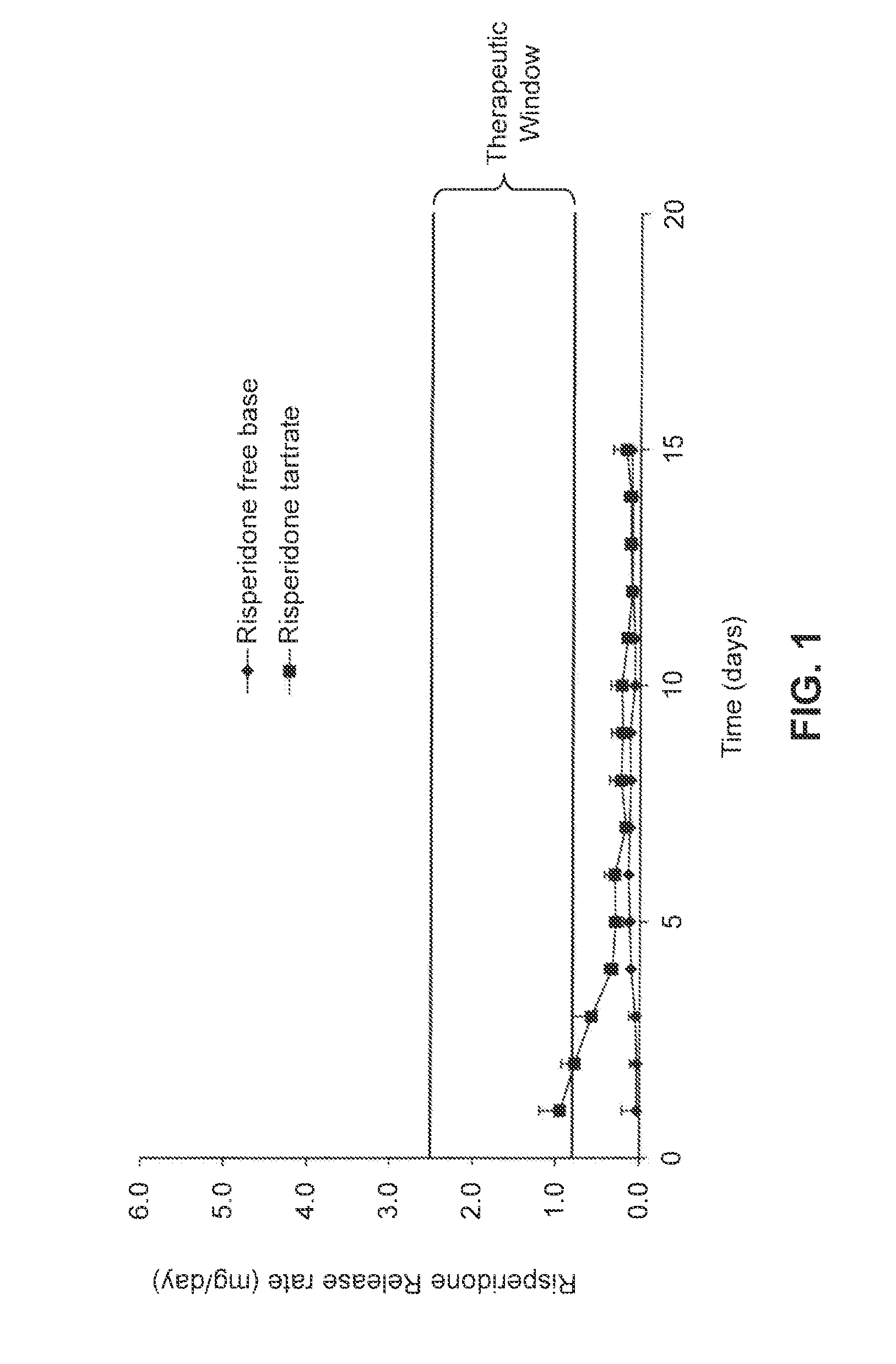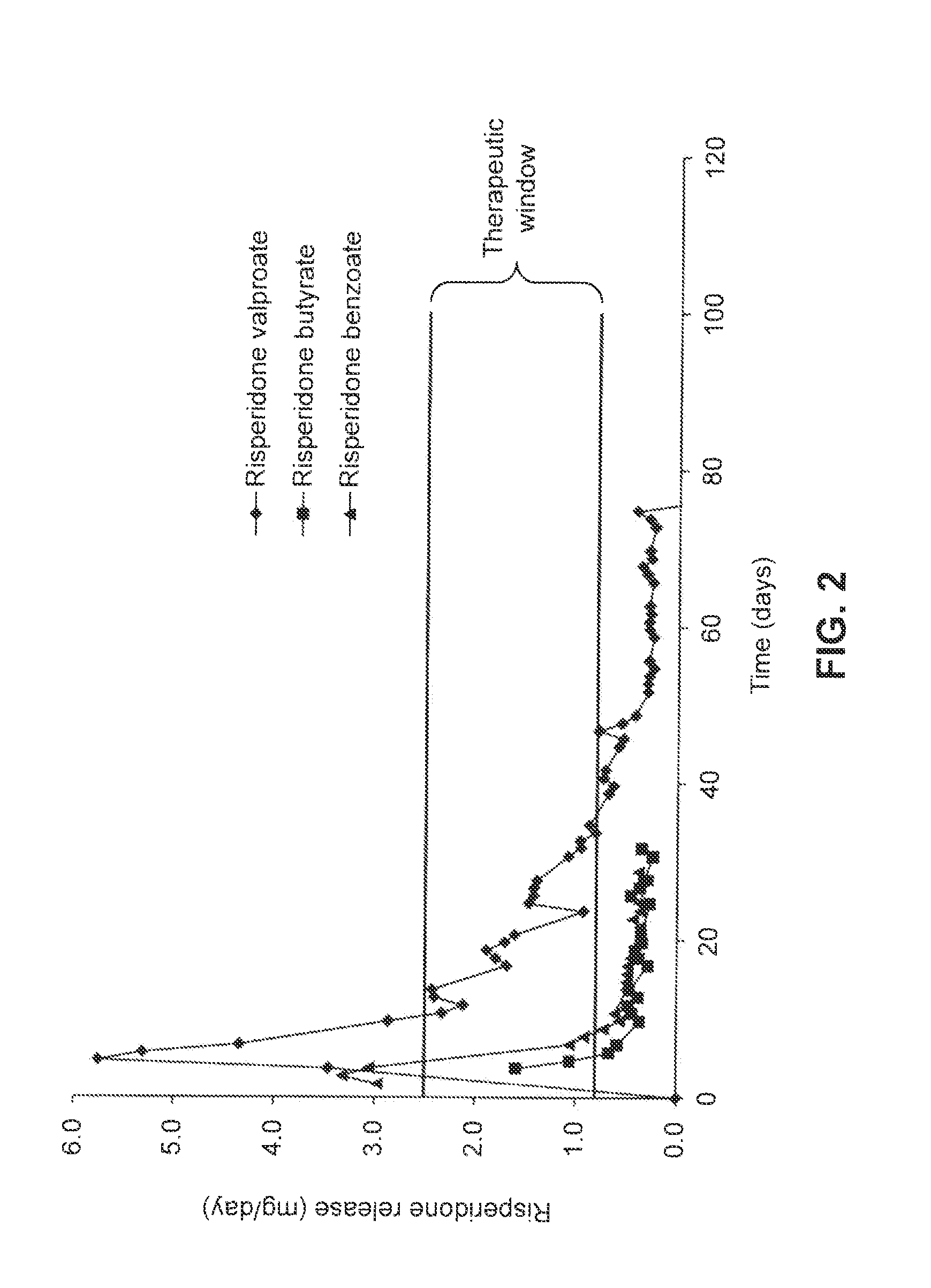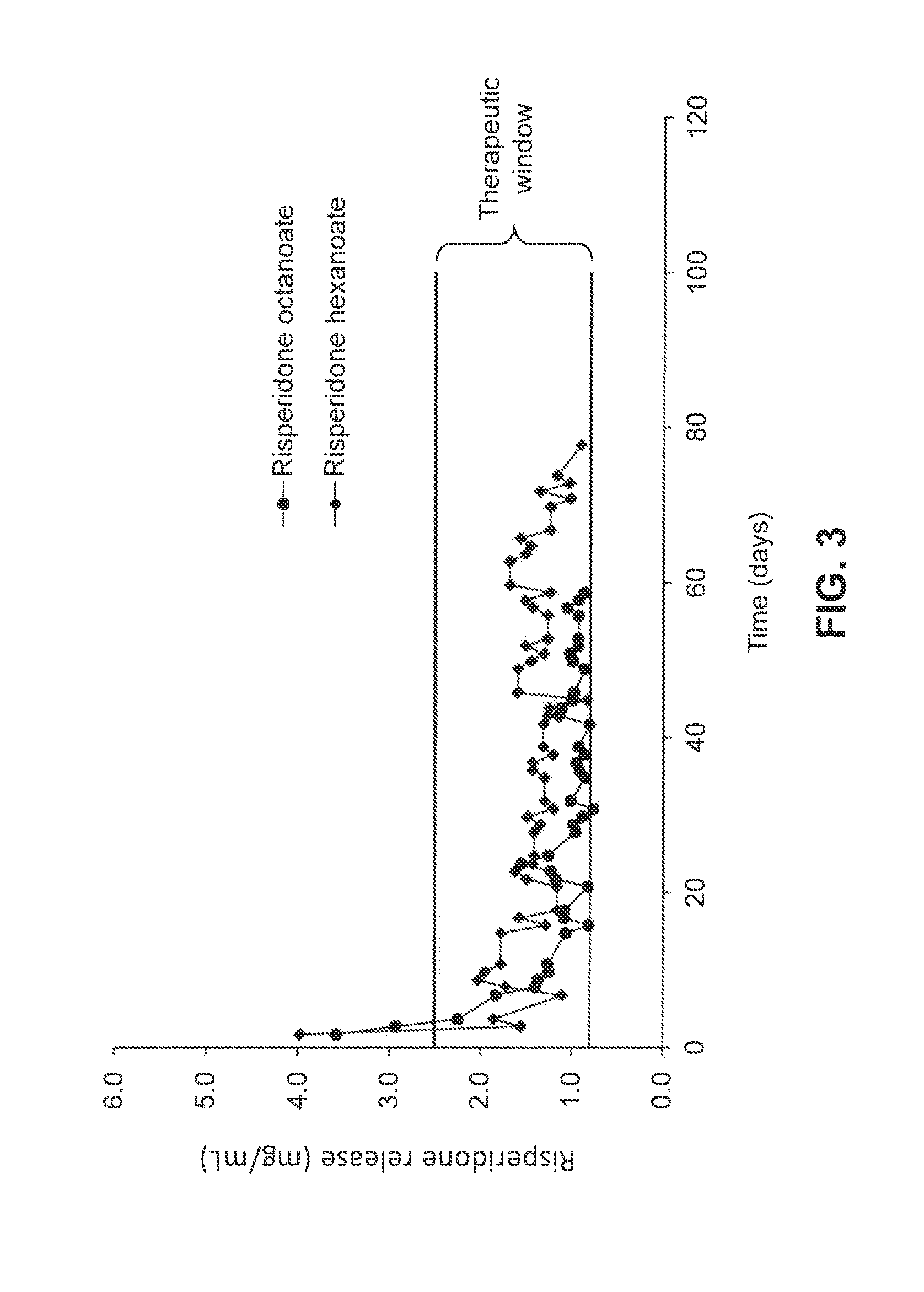Device and method for sustained release of antipsychotic medications
- Summary
- Abstract
- Description
- Claims
- Application Information
AI Technical Summary
Benefits of technology
Problems solved by technology
Method used
Image
Examples
example 1
Preparation of Salt Form of a Therapeutic Agent
[0084]Risperidone (1.231 g.; 3 mmol) was dissolved in a minimal amount (about 5 mL) of dichloromethane. To this solution was added a 3 mmol aliquot of an appropriate aliphatic acid (for example, 348.5 mg or 0.375 mL of hexanoic acid). The resulting solution was mixed by transfer pipet until clear, and then evaporated to yield the desired salt. In the case of highly crystalline salts (e.g., the hexanoate), the resulting solid was first ground by mortar and pestle and then sieved to yield a powder consisting of about 20-100 μm particles, which could then be dried in vacuo to remove traces of additional solvent. In the case of soft, semi-crystalline salts (e.g., the octanoate or 2-propylpentanoate [valproate]), the resulting mixtures were loaded directly into devices as a paste. Risperidone tartrate was prepared by combining risperidone base with a stoichiometric amount of 2,3-dihydroxysuccinic acid in an appropriate solvent and removing t...
example 2
Loading of Salt Form of Agent into Drug Delivery Devices
[0085]Cylindrical titanium reservoirs with an outer diameter (OD) of 5.4 mm, and inner diameter (ID) of 3.7 mm and a length of 40 mm were created by lathing and drilling titanium metal stock (Sorenson Precision, Inc., Goleta, Calif.). The outer diameter of each reservoir (5.5 mm form each end) was further lathed to an OD of 4.95 mm to serve as the receptive surface for the press fitting of end caps.
[0086]Reservoir caps of an OD of 5.54 mm, ID of 4.94 mm and length of 6.10 mm were milled from solid PEEK material. A 1 mm lip with an ID of 3.7 mm was incorporated in one end of the cap to serve to retain the membrane stack and o-ring during press fitting operations. Both titanium and PEEK are know to be biocompatible. Both titanium reservoirs and plastic caps were first cleaned with aqueous detergent and ethanol and then dried carefully prior to device assembly.
[0087]Each reservoir was capped at one end with an open polyether ether...
example 3
[0090]Following hydration (Example 2), each device was transferred to a labeled petri dish containing 13 mL of Earle's balanced salt solution plus 0.02% sodium azide. The dish was placed in an incubator with pCO2 adjusted to give an average buffer pH of 7.4. Approximately once per day, the dishes were retrieved from the incubator. Each device was transferred to a new dish containing an equivalent amount of buffer and then returned to the incubator.
[0091]The retained receiving buffer samples were acidified with 3.0 mL of 0.1 M HCl and allowed to stand for approximately 1 hour. An aliquot of each sample (generally 100 μL) was transferred to a single well of a UV-transparent 96 well plate along with 100 μL of 0.1 M HCl diluent. After plating, the absorbance of each well was recorded at 270 nm using a Molecular Devices spectrophotometer. The absorbances were converted into concentrations (and ultimately output mass per day) by comparison to a standard curve. Sample...
PUM
| Property | Measurement | Unit |
|---|---|---|
| Time | aaaaa | aaaaa |
| Time | aaaaa | aaaaa |
| Time | aaaaa | aaaaa |
Abstract
Description
Claims
Application Information
 Login to View More
Login to View More - R&D
- Intellectual Property
- Life Sciences
- Materials
- Tech Scout
- Unparalleled Data Quality
- Higher Quality Content
- 60% Fewer Hallucinations
Browse by: Latest US Patents, China's latest patents, Technical Efficacy Thesaurus, Application Domain, Technology Topic, Popular Technical Reports.
© 2025 PatSnap. All rights reserved.Legal|Privacy policy|Modern Slavery Act Transparency Statement|Sitemap|About US| Contact US: help@patsnap.com



